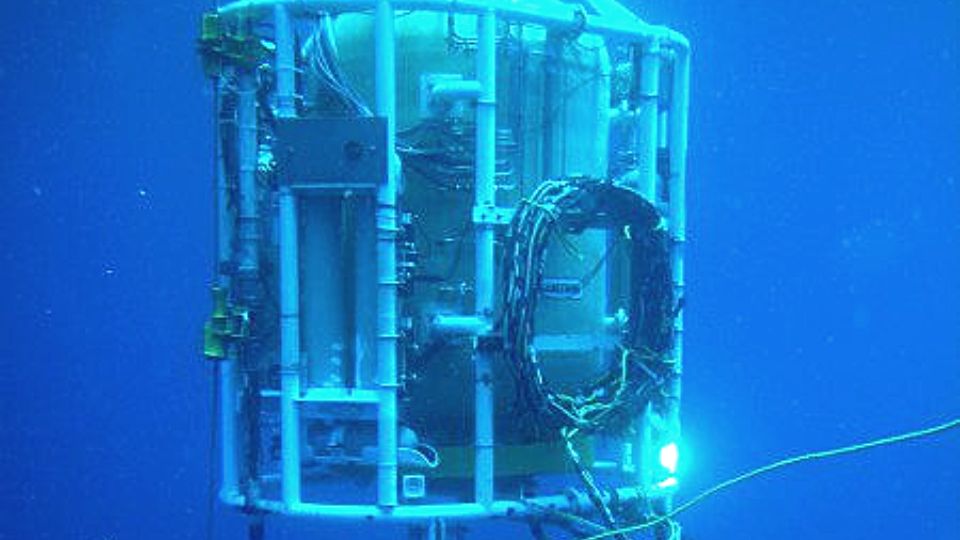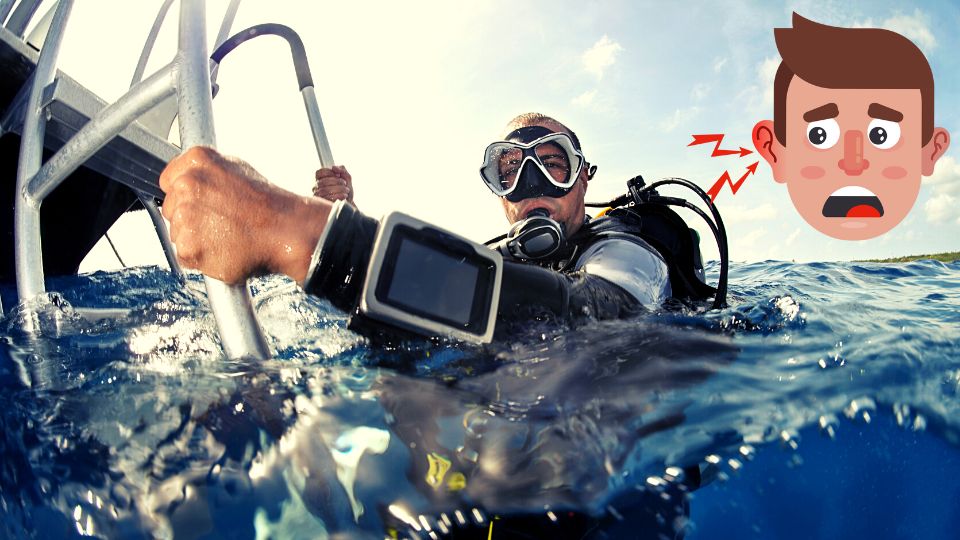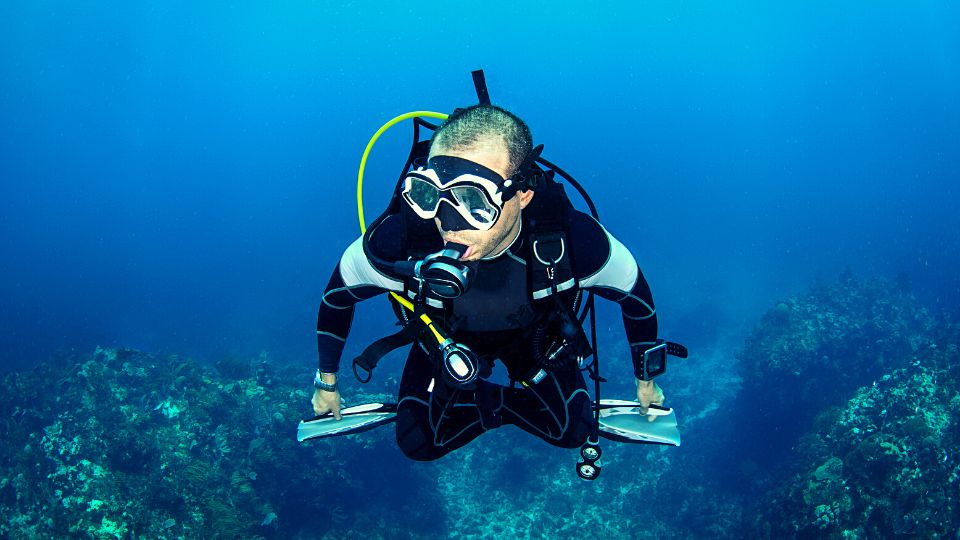A diving bell is a fascinating piece of equipment that has been used for centuries to allow divers to explore the ocean’s depths.
It is a chamber that is open at the bottom and is lowered into the water by a cable, allowing divers to descend into the water while remaining inside the chamber.
In this article, we will explore how a diving bell works. We will discuss the history and development of diving bells, the principles of buoyancy that allow them to descend and ascend, and the features of modern diving bells. We will also examine the various uses of diving bells, including exploration, construction, and salvage.
What is a Diving Bell?
Diving bells are an innovative diving vessel that allows divers to remain underwater for extended periods of time, making them useful tools for commercial divers working on underwater construction or salvage projects.
Diving bells work by lowering them directly into the water, creating a vacuum inside that traps air. This allows divers to surface at the opening, take a breath, and continue exploring or collecting items from below until their supply of air runs out.
However, this technique has its limits. For one thing, it only penetrates so deep and leaves no breathable pocket of air beneath. This issue was unsolvable until the sixteenth century when Franz Kessler developed an improved diving bell design.
Modern diving bells can descend to depths of 1000 feet (300 meters). Not only that, but they adjust automatically to the pressure in the water by expanding their air spaces as they descend.
Diving bells were a ubiquitous sight throughout the 16th and 17th centuries, created by engineers and architects with an ambition to explore deep sea and retrieve sunken objects from beneath the waves.
How Does a Diving Bell Operate?
Diving bells work by trapping air under water pressure. This breathable atmosphere, filled with oxygen, allows divers to stay underwater for longer than they might be able to stay submerge themselves underwater.
To use, the diving bell is lowered mouth-first into the water and then submerged until the desired depth has been reached. At that point, breathable air from within will be trapped by water pressure until its diver emerges.
When the bell is raised, any trapped air will escape through its open sides and back into the water below. As pressure inside the bell decreases, more carbon dioxide will build up under its sides.
Modern diving bells feature windows made of cast acrylic, a special grade of cast glass designed to withstand high pressures. Additionally, they have exterior girding as well as emergency gas and power supplies racked around the framework.
Diving bells have long been used for harbor and lighthouse foundations, dock construction, deepening harbors and salvaging wrecks. But their most famous use occurred in 1875 when Philologous H. Loud purchased a diving bell to mine gold from Chestatee River bottom gravels in White Co., GA.
The Physics of Buoyancy and Pressure
A diving bell operates using two fundamental physical principles: buoyancy and pressure. Buoyancy determines how well an object remains afloat underwater, while pressure determines how quickly that object can be propelled from one place to another.
With increased pressure at depth, there is also an upward force on a submerged object known as buoyant force. This force equals the weight of water displaced by that object.
Buoyancy is determined by the density of a fluid, which in turn determines the volume of an object. For instance, dropping a can of beans into water causes its weight to displace water equal to its volume.
The weight of displaced water is equal to the buoyant force on a can. This principle, known as Archimedes’ principle, states that an object’s weight is equal to its original weight minus any water lost.
Divers must remain buoyant during a dive to stay afloat. Neutral buoyancy occurs when the upward force exerted by displaced water equals that exerted by their bodyweight plus any equipment they are wearing (gravitational force).
Advantages and Limitations of a Diving Bell
Divers have used diving bells throughout history to transport themselves from the surface to depths of the ocean. Nowadays, commercial divers use them for underwater work or searching for objects sunk by ships.
Early diving bells typically consisted of a container open at the bottom and filled with compressed air. As the bell was lowered into the water, water pressure compresses this gas inside, causing it to fill with water.
However, this is not ideal and can lead to dehydration or oxygen deprivation in a diver. Fortunately, modern diving bells feature an internal air pump that continuously replenishes the oxygen supply.
Additionally, divers in diving bells have the advantage of breathing fresh air from beneath the water’s surface rather than having to drink seawater. This helps prevent hypoxia and is essential for safety reasons.
Diver bells offer many advantages, but also have their drawbacks. A diver in a diving bell may be difficult to manage and administer CPR if they become unconscious.
Historical Use of Diving Bells
Diving bells have been used for a wide range of purposes throughout history. From hunting and collecting sunken treasures to military and farming endeavors, they were employed for numerous reasons and in various capacities.
In the 1600s, people began using diving bells for salvaging metals and cannons from shallow bays and lakes. These devices were constructed out of barrels that had been inverted and weighted so that they would sink to the bottom.
The diving bell was lowered mouth-first into the water, with its diver inside breathing air until they reached their required depth. They then emerged and returned to the bell for additional oxygen until they regained visibility on top.
Though these diving bells were highly effective, they had some drawbacks. Firstly, the water pressure would only allow divers so deep before forcing air out – potentially leading to decompression sickness and other issues for divers.
In the 17th century, Edmund Halley devised a system that continuously pumped air into diving bells from above – much safer and more reliable. John Lethbridge also designed an underwater cylinder with renewable supplies of air for divers at depth.
Modern Advances in Diving Bell Technology
Diving bells have been an indispensable tool for divers for centuries. Divers use them for salvage, construction, and repair projects alike.
Diving technology has dramatically advanced over the years. In the beginning, divers had to rely on a manually operated air pump at the surface for their oxygen supply. Nowadays, divers can enjoy many more advanced features while underwater.
Modern scuba divers rely on self-contained breathing apparatus to breathe underwater. This system includes a hose, mouthpiece and two cylinders which are carried on the diver’s back.
However, these systems can be cumbersome and expensive for many divers. To reduce costs and make them more practical, some inventors have created more cost-effective self-contained systems designed specifically with recreational scuba divers in mind.
One such design is the aqualung, created by Yves Le Prier and Emille Gagnan in 1943.
The aqualung allows divers to dive and explore deep waters without being constantly connected to surface hoses. It also helps prevent decompression sickness, which occurs when nitrogen bubbles are released in the body while diving, leading to pain, paralysis or death.
Conclusion
Diving bells are large containers designed to allow divers to stay underwater for extended periods. The first diving bells were used in 15th century underwater salvage operations, intended to recover relics from shipwrecks.
The history of diving bells is extensive and diverse. One notable use was in Rome, when they were employed to recover valuable relics from wrecked ships. Another iconic use was in the 18th century when John Smeaton created a diving bell equipped with an air pump for convenience.
As the bell descends, water pressure lowers inside and allows more air to enter. This air is pumped in through its walls and out through its bottom in order to maintain equal pressure levels within and on top.
The bell also houses divers’ bailout cylinders and umbilicals, which must be mounted around the outside of the bell and connected to an internal gas panel via manifolds. At the bottom, there must be a hatch large enough for a fully kitted diver to enter and exit safely; it should never be closed while they are inside.






